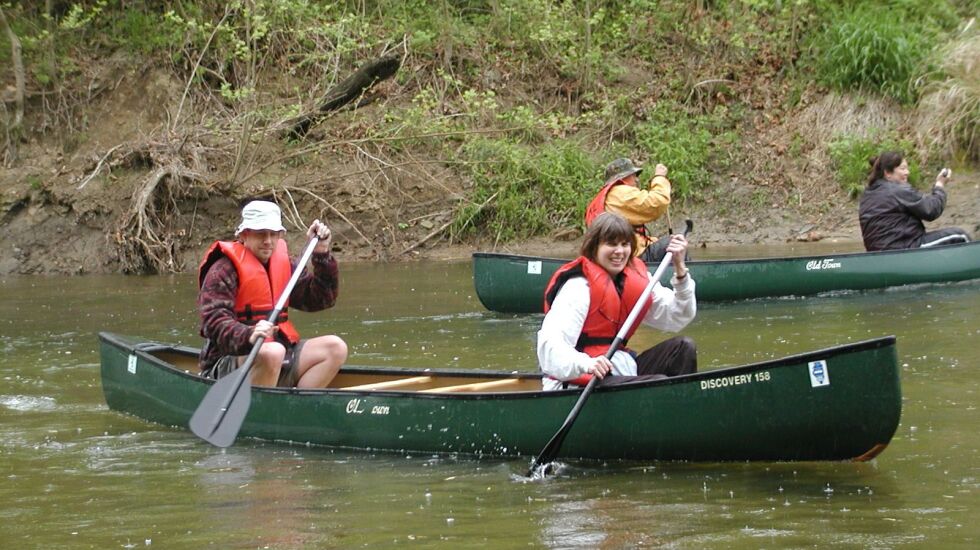
The herb garden, of all things at Kennekuk County Park, most catches me. The Vermilion County Master Gardeners tend the themed raised beds of herbs so expertly that before the pandemic I trekked there with my wife for a presentation on the history and uses of herbs.
In recent years, Kennekuk became a side trip when I visited our daughter at the University of Illinois. Kennekuk is part of a cluster of natural/wild areas, along with the Illinois Department of Natural Resources’ Middle Fork State Fish and Wildlife Area and Kickapoo State Recreation Area, which I recommend when readers ask about a camping or wild getaway while visiting U of I. Kickapoo is a half-hour drive from U of I, the other two sites a few minutes more.

Such clusters are important to restore and preserve wild and natural spaces. Clusters serve multiple roles for multiple reasons.
“There are practical, ecological and social benefits to clustered sites like that,” emailed Jeff Walk, director of conservation for The Nature Conservancy in Illinois. “If the sites are under the same ownership or rely on the same management team (e.g., a contractor), there’s some logistical efficiency around management.”
An example would be the Forest Preserves of Cook County’s 15,000 acres of the Palos Preserves.
“If ownership varies, there’s the potential for innovation and resource sharing – of course, flexibility and appetite for that can vary across organizations,” Walk emailed. “Different sites can also manage towards complimentary conservation outcomes that support a broader suite of biodiversity; maybe floodplain site A is managing for moist soil plants to support migratory waterfowl, so site B considers managing for deeper over-wintering fish habitat and collectively more river species thrive in the area.”
A prime example would be TNC’s Emiquon Preserve, the Chautauqua National Wildlife Refuge and the Emiquon NWR along the Illinois River near Havanna.
Eric Schauber, Illinois state biologist and director of the Illinois Natural History Survey, touched on both human and natural-world reasons for clusters, when he tweeted, “I think the clusters happen for two main reasons: (1) multiple entities tend to protect land in areas where land is available and not exorbitant (not prime farmland), and (2) establishing a new protected area near an existing area helps create larger patches of habitat that are can support viable populations of a larger number of species.”
Walk also split the advantages into the human and natural world.
“With grouped natural areas, there is also more opportunity for species to move about from site to site, creating larger and more stable metapopulations such that biodiversity is more likely to persist in clumped vs dispersed natural areas,” he emailed. “Also, with more sites in close proximity, there’s just a greater chance of having different types of slope, aspect, soil types, etc. represented and more physical diversity sets the stage for more biological diversity.
“On the people side, a grouping of sites might make an area more attractive for a dedicated trip to visit. And when a place gets really popular, nearby sites can be an escape valve for the high traffic volume – when Starved Rock gets too crowded, clever visitors slip across the road to Matthiessen State Park.”
That is a doozy of an example of which literally millions of Illinoisans are familiar.

In this case, all three sites—Middle Fork SFWA, Kennekuk and Kickapoo—provide hiking, camping, fishing, picnicking, paddling and hunting opportunities.
Middle Fork SFWA (dnr.illinois.gov/parks/park.middlefork.html) is 2,700 acres of grass, forest and cropland. I’ve hunted and camped there. It also offers an archery trail, trap range and equestrian.
Kennekuk (vccd.org/kennekuk-county-park/), 3,000 acres of “an oak-hickory forest type with native tall grass prairie areas,” also contains three Illinois Nature Preserves. It’s a favorite of mine and our daughter. Kennekuk also offers building/pavilion rentals, berry picking, mushroom hunting and, as mentioned at the top, an impressive herb garden.

The 2,842 acres of Kickapoo SRA (dnr.illinois.gov/parks/park.kickapoo.html) include 22 deep-water ponds and a total “of 221 acres of water for boaters, canoeists and anglers.” It is a rare IDNR site that allows scuba diving. I’ve paddled the Middle Fork with our sons, using rentals from the concessionaire. When the kids were small, we used the kids’ play areas. Kickapoo also offers tubing and mountain biking.
Flowing through all three sites is the Middle Fork branch of the Vermilion River, of which 17.1 miles are designated as Illinois’ only National Wild and Scenic River. It’s a wonderful cluster getaway and family friendly.








